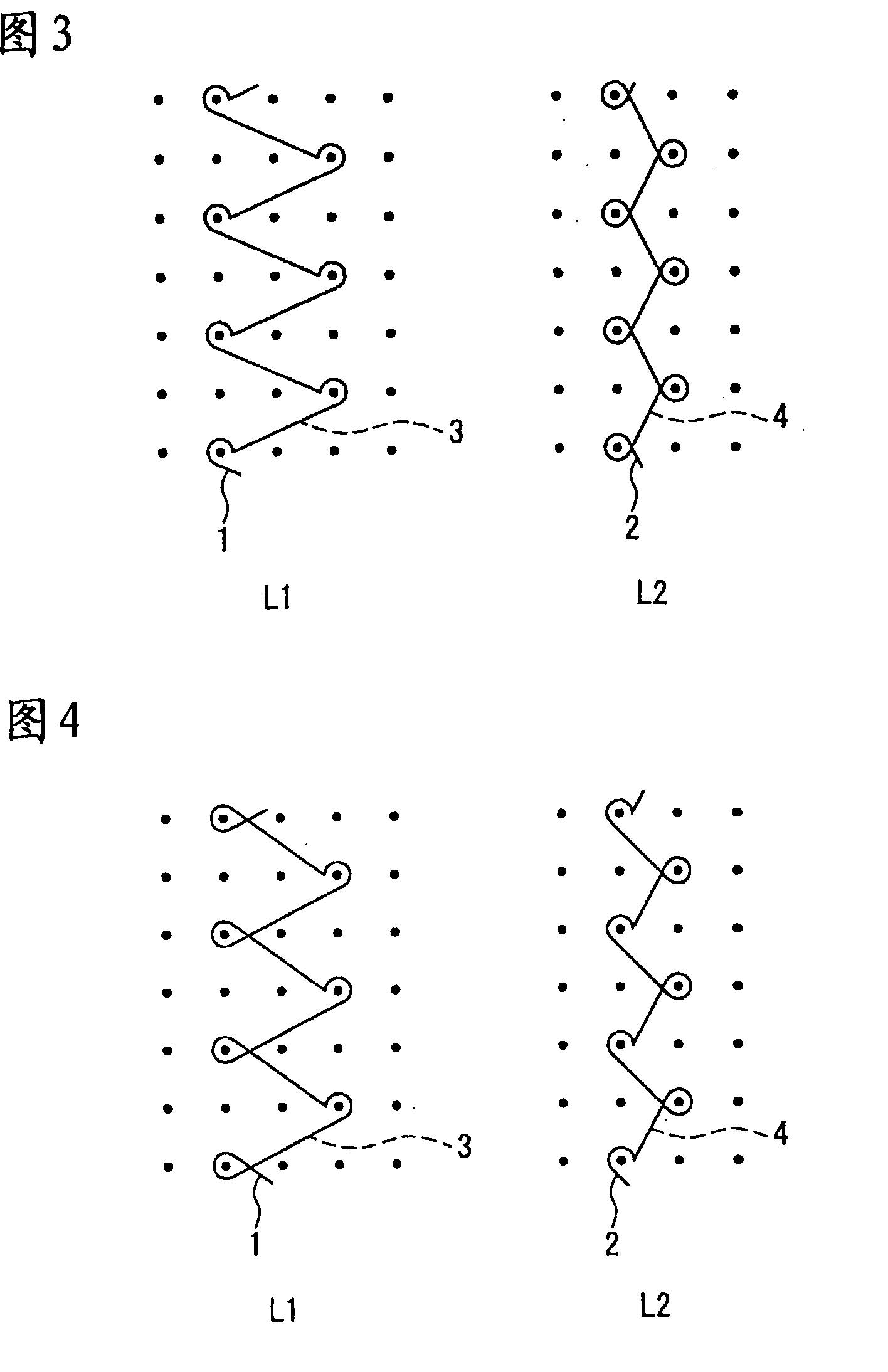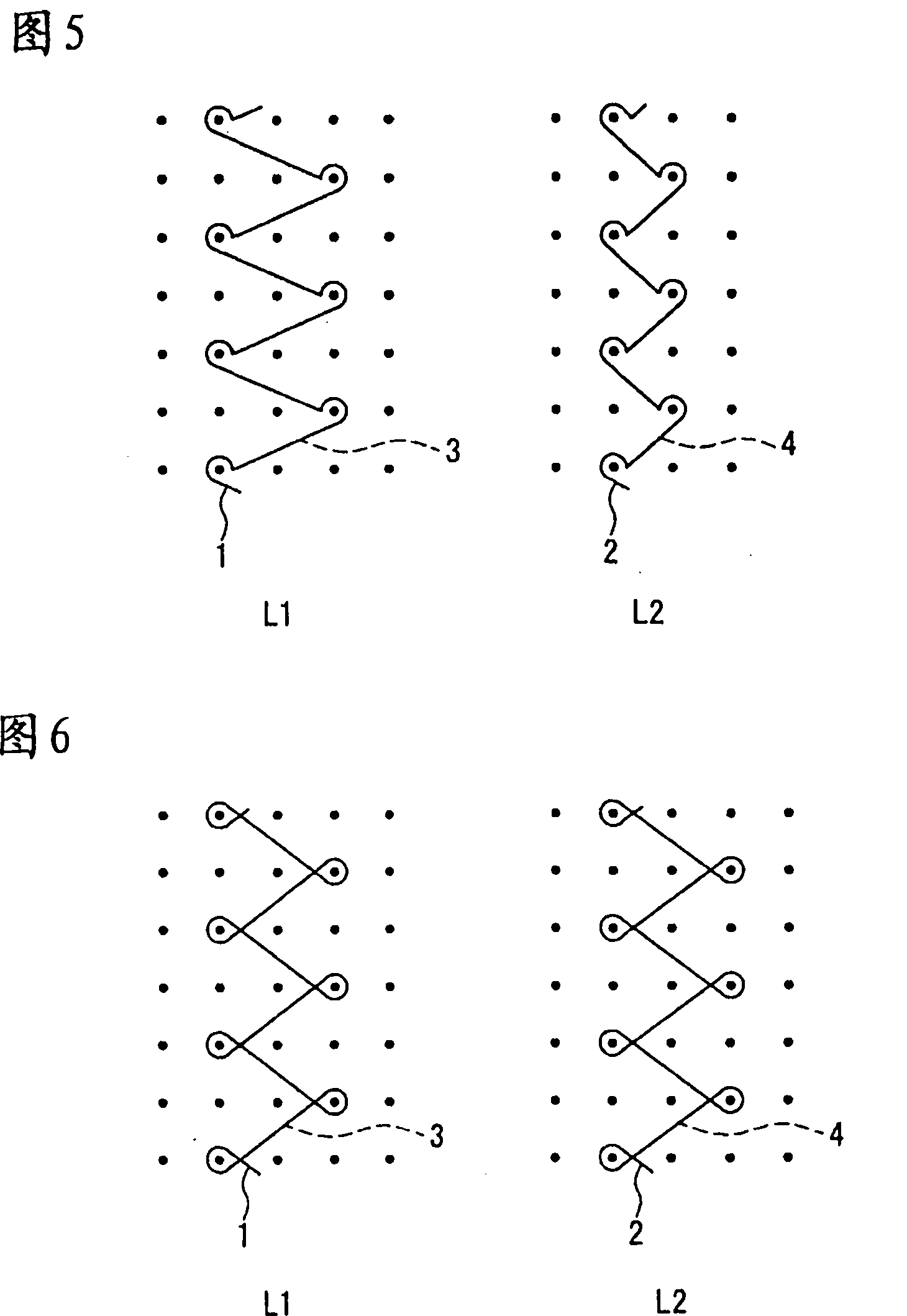Garment
A technology of clothes and edges, which is applied in the field of stretchable clothes, can solve the problems that the edges do not stick to the body, the edges are easy to bend, and are prone to curling, etc., and achieve excellent tear strength, improved tear strength, and thin The effect of skin touch
- Summary
- Abstract
- Description
- Claims
- Application Information
AI Technical Summary
Problems solved by technology
Method used
Image
Examples
Embodiment 1
[0175] Figure 13 It is a front view of shorts which are an embodiment example of the garment having edges that do not require edge processing in the cut state of the present invention, Figure 14 for Figure 13 Rear view of shorts shown, Figure 15 as shown on knitted fabrics for forming Figure 13 , Figure 14 A top view of the cutting line of the single layer 1 continuous panel (P) 18 of the shorts shown.
[0176] exist Figure 13 ~ Figure 15 In , the symbol 18 is a single-layer one-piece continuous part (P) for forming the underpants main body. refer to Figure 15 Roughly divided, the symbol 13 is the front part, the symbol 14 is the crotch part, the symbol 15 is the rear part, and the main body of the shorts is stitched Figure 15 The A-B line and D-C line and the suture H-G line and E-F line are formed. That is, only the left and right sides are sewn together to form the garment. Then, on the inner side of the shorts main body, the main expansion and contraction...
Embodiment 2
[0188] Figure 16 It is an axonometric view viewed from the back side of a half-length girdle panty which is an embodiment of the garment of the present invention, which has an edge that does not require edge processing in a cut state and has a body shape compensation function, Figure 17 for Figure 16 An axonometric view from the front side of the half-length girdle shown, Figure 18 as shown on knitted fabric 29 Figure 16 , Figure 17 The half-length girdle shown is a top view of the front side-side-hip-leg corresponding to the wearer's left side serving as the cutting line of the panel 21 and a top view of the crotch panel.
[0189] exist Figure 16 ~ Figure 18 Among them, symbol 21 is a front side-side-buttock-leg covering the front side-side-buttock-leg serving as a part, which becomes a single-layer part piece that is continuous in the upper and lower directions of the girdle underwear and has no steps on the surface . Reference numeral 26 serves as a part for th...
Embodiment 3
[0201] Figure 19 It is an axonometric view viewed from the back side of a short girdle panty which is an embodiment of the garment of the present invention, which has an edge that does not require edge processing in a cut state and has a shape compensation function, Figure 20 for Figure 19 An axonometric view from the front side of the short girdle brief shown, Figure 21 for showing on knitted fabric Figure 19 , Figure 20 A top view of the tunic shown, with the front side-side-hip corresponding to the wearer's left side serving as the cut line for the panel 35 .
[0202] exist Figure 19 ~ Figure 21 Among them, symbol 35 is a front side-side-buttocks covering the front side-side-back part serving as a part, which is a single-layer part piece that is continuous in the vertical direction and has no steps. Reference numeral 36 serves as a part covering the abdomen, and is composed of one single-layer part that is continuous in the vertical direction and has no steps. ...
PUM
 Login to View More
Login to View More Abstract
Description
Claims
Application Information
 Login to View More
Login to View More - R&D
- Intellectual Property
- Life Sciences
- Materials
- Tech Scout
- Unparalleled Data Quality
- Higher Quality Content
- 60% Fewer Hallucinations
Browse by: Latest US Patents, China's latest patents, Technical Efficacy Thesaurus, Application Domain, Technology Topic, Popular Technical Reports.
© 2025 PatSnap. All rights reserved.Legal|Privacy policy|Modern Slavery Act Transparency Statement|Sitemap|About US| Contact US: help@patsnap.com



